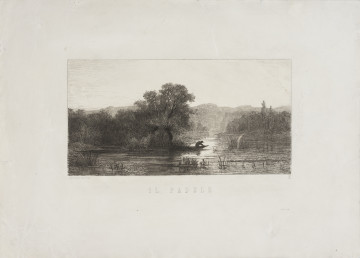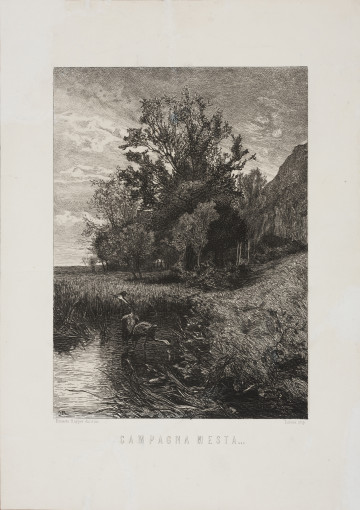
Il Padule | Swamp
1870
National Museum in Szczecin
Part of the collection: European classics of modernity
Ferdynand Ruszczyc came from a Polish-Danish family connected with the Latvian town of Lipawa, the Byelorussian town of Minsk and the hereditary estate in Bohdanov, which in the interwar period belonged to the Novogrodek Voivodeship of the Second Polish Republic. In 1883-1890, he studied at Minsk gymnasium, taking drawing lessons at the same time with Kuzma Yakovlevich Yermakov. After graduating with honours, he enrolled at the University of St Petersburg to study law, and at the same time attended the Academy of Fine Arts there as a free student. Eventually, he chose to study art under Ivan Shishkin (1892-1895). His classmates in the studio of Archip Kuinji (1895-1897) included the future set designer of the Russian Ballets Nikolai Roerich and the doyen of Latvian plein-air painting Vilhelms Purvītis. Thanks to the purchases of Ruszczyc's paintings for the collections of Pavel Tretyakov and Savva Morozov, the young painter was able to travel extensively. After receiving his diploma, he settled in his native village. There, he painted the programme canvas Ziemia [The Land] (1898), which, during a solo exhibition in Vilnius (1899), evoked the admiration of critics and the general public, and soon became an emblem of the popular movements, bringing together the leftist, independence-minded and anticlerical intelligentsia. An extensive analysis of Ruszczyc's style was published in 1939 by the Lviv-based researcher, Aleksandra Majerska. Bound for Szczecin between 1946 and 1950, she became the first art historian active in a Polonised museum. Ruszczyc was ideally suited to the new political system since although a nobleman, he was a progressive Polish patriot with Northern roots and Soviet connections. The first painting the artist purchased for the collection, Potok [The Steam], contained the most important features of landscapes noted by Majerska: view from above, high horizon, [...] obscuring depth to isolate the scene from the objective totality of space (Ferdynand Ruszczyc 1870-1936. Psychologiczna charakterystyka stylu [Psychological Characteristics of style], Nike 1939, p. 1, pp. 27-28).
Szymon Piotr Kubiak
Author / creator
Dimensions
cały obiekt: height: 41,5 cm, width: 47 cm
Object type
painting
Creation time / dating
Creation / finding place
Identification number
Location / status

1870
National Museum in Szczecin

1870
National Museum in Szczecin

1903
National Museum in Szczecin
DISCOVER this TOPIC
Castle Museum in Łańcut
DISCOVER this PATH
Educational path